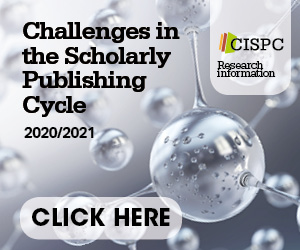Teamwork saves review time in neuroscience
Submitting a research paper to a journal can be a long process. And if, after receiving reviews, the paper is rejected by one journal, the author has to go through the whole process again with another journal. In some disciplines, it can often be the case that same reviewers are contacted by the second journal and asked to review the paper again. A frustrating and time-consuming process for all involved.
The Neuroscience Peer Review Consortium (NPRC) hopes to change this.
In an unprecedented move, a group of neuroscience journals have agreed to share reviewers' comments amongst each other and formed the NPRC. Set up at the beginning of this year, the NPRC hopes that by reducing the number of times a manuscript is reviewed it will reduce the load on reviewers and editors and speed the publication of research results.
This process of passing on reviews is already practiced by companies that publish related journals, such as the Nature and Cell families of publications. But this is believed to be the first time that competing journals have agreed on such a cooperation.
'We think everyone will benefit from the consortium,' said Elli Chatzopoulou, from the International Neuroinformatics Coordinating Facility Secretariat, in Sweden, which hosts the consortium. 'It will be less likely that reviewers will be contacted twice to review the same article; authors will not have to wait so long to see their work published; editors will have fewer reviews to chase; and publishers will hopefully see their journals attracting more submissions.'
The consortium is open to any self-identified neuroscience journal that is indexed by MEDLINE. The members of the consortium must agree to forward all reviews of a manuscript to another consortium journal if authors have resubmitted that manuscript and requested that the reviews be forward. They must also agree to configure review forms so that there are no confidential comments to the editors and that authors know all the material that would be forwarded. The journals must also inform reviewers that their reviews may be forwarded to another consortium journal.
The consortium does not stipulate any particular process for handling the reviews that journals receive from/forward to another journal. Each journal in the consortium may decide on its own methods for dealing with the forwarded reviews.
'The consortium itself is not involved in the publishing process. This is, as always, handled by the journals and authors,' explained Chatzopoulou. 'The author continues to remain in control of where the article gets published.’
This has made the consortium relatively easy and quick to set up. 'It pretty much runs itself and has been set up with no extra funding,' continued Chatzopoulou. 'It also does not impose any fees on journals or authors.'
The Consortium currently consists of 22 journals, with another six in the process of joining.
It is possible that the review-forwarding system could lead to increased submissions at high-profile journals, in that authors would think that they don’t have much to lose in submitting to the higher-ranked journals given the expedited re-submitting procedures. In fact, the highly-ranked Journal of Neuroscience, which can accept only a small fraction of submitted manuscripts, expects an increase in submissions now that the journal is an NPRC member.
'Because we are a society-run journal, we have an obligation to serve the neuroscience community and are therefore prepared to provide the resources to handle an extra load,' said the journal’s editor-in-chief John Maunsell. 'If the Journal of Neuroscience has to find more reviewers, the field as a whole should have to find fewer. If the NPRC works well, finding reviewers will become easier for everyone, because reviewers will be asked to do fewer reviews.'
The consortium was set up after the PubMed Plus Conference in June 2007 where a task force on neuroscience publishing identified the need to speed up the review process. It has been set up for a one-year trial period, after which its effectiveness will be reviewed. 'We have had a very positive response so far,' commented Elli Chatzopoulou. 'We hope that in the future this initiative could be taken further and that, if it is successful, other similar consortia will be established by other groups of journals.'






